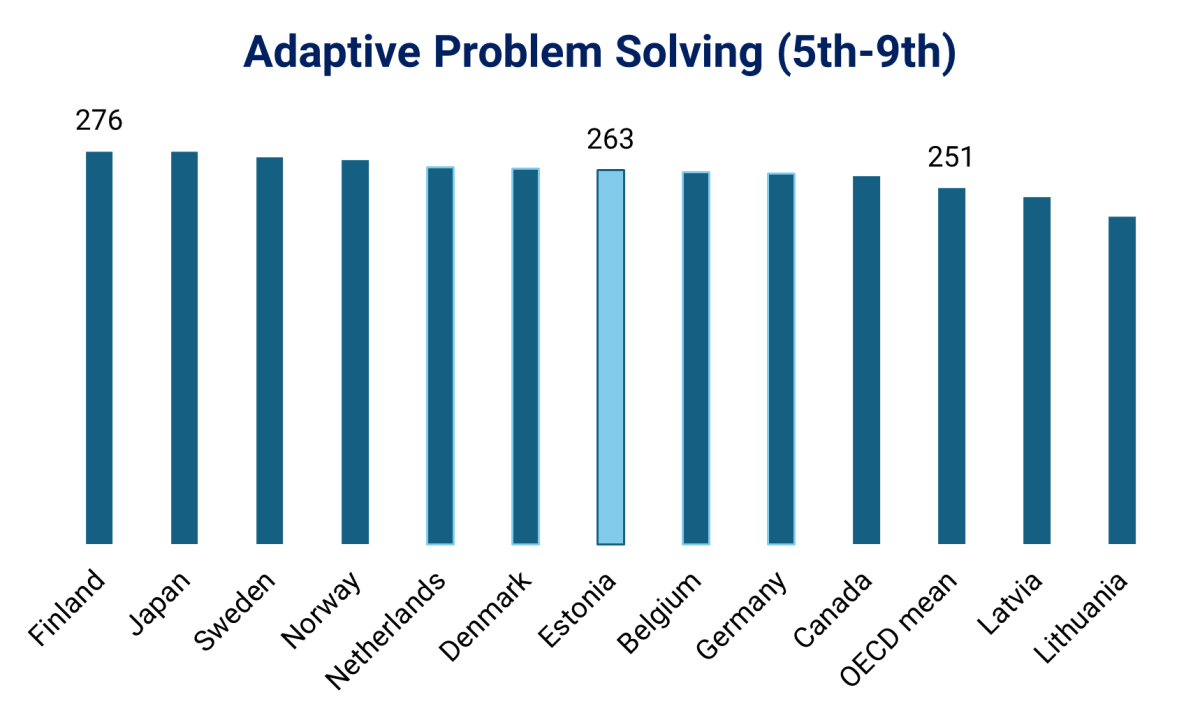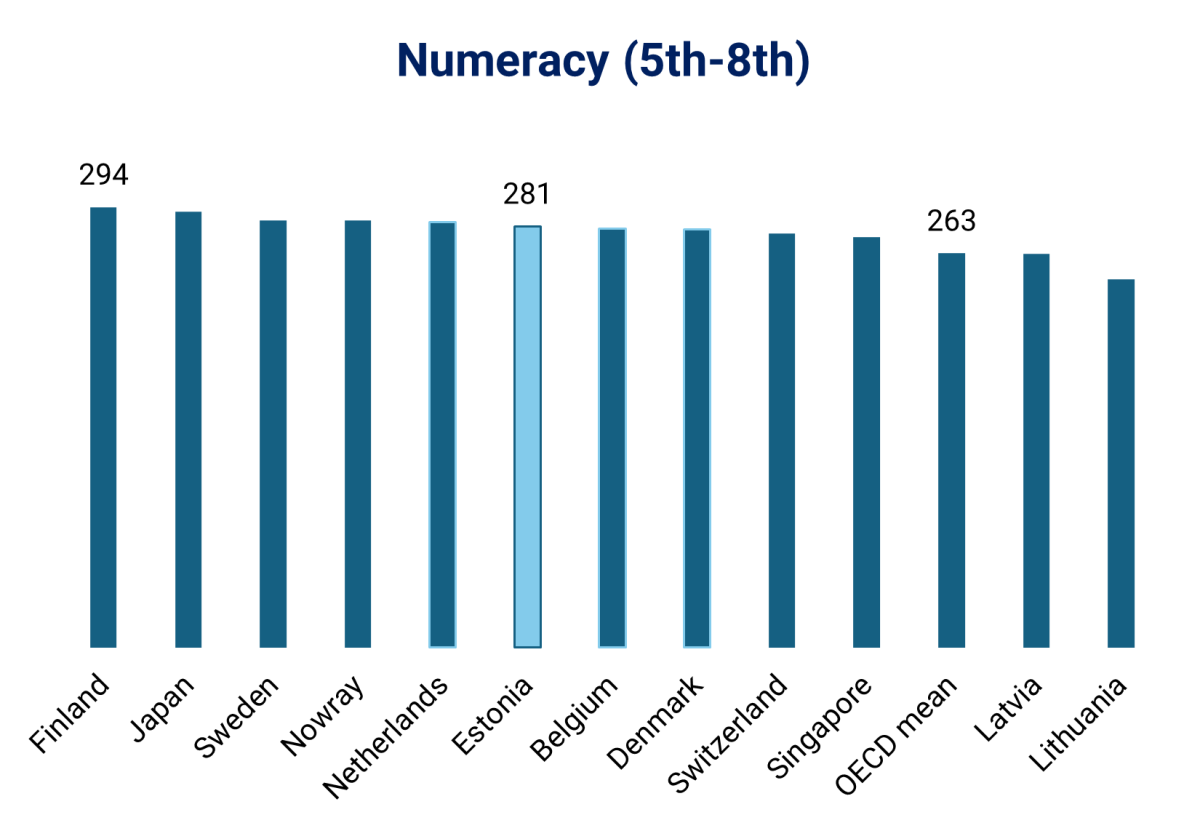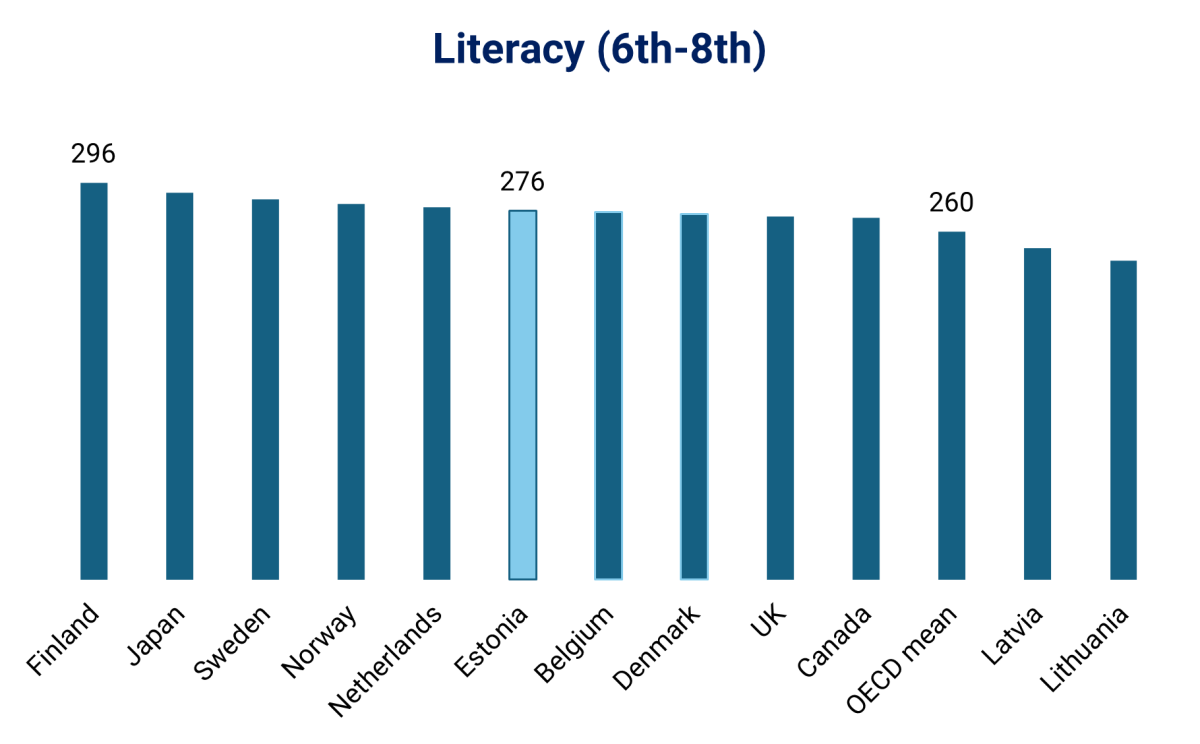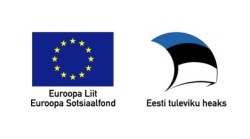PIAAC (Programme for the International Assessment of Adult Competencies) is an international survey of adult skills initiated by the OECD. It measures the functional literacy, mathematical literacy, and adaptive problem-solving skills of the adult population.
The first wave of the PIAAC survey was conducted in three separate rounds between 2011 and 2018, covering 39 countries, including Estonia. During the first wave, about 245,000 adults were interviewed, representing 1.15 billion people. PIAAC 2023, or the second wave, took place from 2022 to 2023, and to date, 31 OECD countries and economies have participated.
PIAAC 2023
In 2022-2023, the second wave of data collection for the PIAAC study took place. The study involved 6,665 Estonians aged 16-65.
Main results
The results of the second wave were published on December 10, 2024.
- PIAAC 2023 shows that the skills of Estonian people are very good and that the proportion of adults with very good skills has increased compared to the previous study.
- According to PIAAC 2023, Estonia's results are 276 points in functional reading skills, 281 points in mathematical literacy, and 263 points in adaptive problem-solving skills.
- Compared to the previous wave of the study, the level of functional reading skills has remained the same, while the average score for mathematical literacy has increased by 8 points. Only Finland (17 points) and Singapore (17 points) saw a higher increase in mathematical literacy scores.
- In many countries, the level of information processing skills has actually declined between the two waves of the study. In a comparison of countries for all information processing skills, Finland, Japan, Sweden, and Norway occupy the top four spots. They are followed by the Netherlands, Estonia, Belgium (Flanders), and Denmark (also Germany in problem-solving skills) with statistically indistinguishable differences.
- Overall, depending on the skill, Estonia ranks 5th to 9th internationally, clearly above the OECD average in all measured skills.
Materials



PIAAC 2008–2015
Three key information-processing skills were measured in the study:
- literacy
- numeracy
- problem-solving in technology-rich environments
Several analyses have shown the increasing importance of these skills for successfully navigating the jobs market and in the modern information-rich society. Not any less important is that these skills are relatively easy to measure and learn, which means that they can be influenced by shaping policy. In Estonia, the results of PIAAC were taken into account when developing the strategy for lifelong learning.
- The PIAAC survey is conducted by the Ministry of Education and Research. Contact: Triin Savisto, triin.savisto@hm.ee, phone 7 350 278
-
The implementation of the survey is conducted by Statistics Estonia. Contact: klienditugi@stat.ee, phone 6259100 (Mon-Thu 8.30‒16.30, Fri 8.30–15.30).
Main results
-
The level of information-processing skills of Estonian adult population is competitive and should not be the main obstacle to performing more complicated work. In Estonia, literacy and numeracy levels are above the average of the 33 participating countries.
-
Our computer skills and confidence in using computers as well as the level of problem-solving skills in technology-rich environments is lower than expected. Only one in four adults have good and very good problem solving skills. 30% do not know how, or do not dare to use new technology.
-
Lower secondary, general secondary and academic higher education graduates have above-OECD average literacy and numeracy skills and the graduates of professional and applied higher educational institutions have average skills. It illustrates current education competitiveness.
-
There are no major gaps regarding skills. Differences in skills in Estonia between people from different educational and family backgrounds and of different genders are relatively small compared with the other countries involved in the study. The differences between regions and between the Estonians and non-Estonians need more attention.
-
Education matters more than skills. Irrespective of how good their information-processing skills are, those with academic tertiary education enjoy a clear advantage in terms of salaries.
-
Over one-third of employed people in Estonia are over-educated, which is the highest percentage among the countries that participated in the PIAAC study. The probability of over-education is greater among older people and people with higher education. Areas of economic activity with greater number of skills-intensive occupations in Estonia have education demand similar to other countries. Predominantly blue-collar areas of economic activities tend to demand lower education levels.
-
Around half of all adults in Estonia have participated in non-formal learning during last year. Work content and workplace characteristics have substantially more impact on involvement in lifelong learning in Estonia than personal characteristics (including education and skills levels).The proportion of working people in Estonia who feel that they need training in order to cope with their existing duties is significantly higher than the average of the OECD countries involved in PIAAC.
-
Skills help to explain linguistic wage gaps. The incomes of Russian-speakers with very good Estonian proficiency were no different to those of Estonian-speakers. In other words, there is no real wage gap between these two groups.
-
Approximately one third of workplaces in Estonia do not use a computer at all. Middle level of computer skills (word processing, spreadsheet calculations or work with databases) is required at 46% of workplaces, the low level of computer skills (data entering or sending/receiving e-mails) is required at 15% of workplaces and the high level of computer skills (software development or modifying computer games, programming, computer network administration) is required at 5% of workplaces.
-
The potential of people skills in the work environment is not being fully realised in Estonia. It seems that the driver behind an improving ability to cope in a technology-rich environment in Estonia is computer use at home.
Reports
In addition to the main report with the initial findings of PIAAC published in October 2013 (available in Estonian only), seven thematic reports tackling questions that are important for Estonia and that include policy recommendations drawn based on the findings are going to be published during the period of 2014-2015. The full reports are available in Estonian only, but summaries of the main findings are also available in English.
- OECD Skills Outlook 2013: First Results from the Survey of Adult Skills
- The Survey of Adult Skills - Reader's Companion
- Skilled for Life? Key Findings from the Survey of Adult Skills
- Technical Report of the Survey of Adult Skills (PIAAC)
- Education, Adult Skills and Social Outcomes: Empirical evidence from the Survey on Adult Skills (PIAAC 2013)
- Can low skill teachers make good students? Empirical evidence from PIAAC and PISA
- SKILLS BEYOND EDUCATION - An analysis of cognitive skill evolution and its implications for employment chances
- Occupational mismatch in Europe: Understanding overeducation and overskilling for policy making
- Skills at Work: How Skills and their Use Matter in the Labour Market
- Skills and labour market outcomes
- The causes and consequences of field-of-study mismatch
- A closer look at the population with low levels of proficiency
- Adults, Computers and Problem Solving: What's the Problem?
- Adults with low literacy and numeracy skills. A literature review on policy interventions
- Trends, ageing and the determinants of skills
The Nordic PIAAC Network has released a joint report Adult Skills in the Nordic region on Estonia, Norway, Sweden, Finland and Denmark in 2015.
Last updated: 16.12.2024
